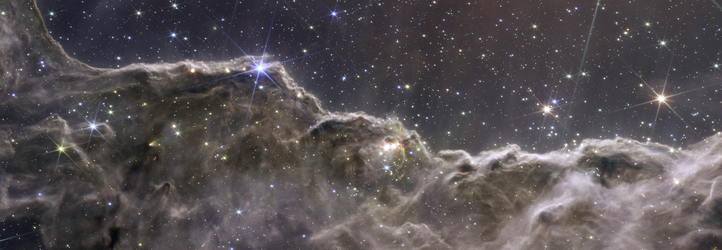Accept all cookies Accept only essential cookies See our Cookie Notice

About ESA
The European Space Agency (ESA) is Europe’s gateway to space. Its mission is to shape the development of Europe’s space capability and ensure that investment in space continues to deliver benefits to the citizens of Europe and the world.
Highlights
ESA - United space in Europe
This is ESA ESA facts Member States & Cooperating States Funding Director General Top management For Member State Delegations European vision European Space Policy ESA & EU Space Councils Responsibility & Sustainability Annual Report Calendar of meetings Corporate newsEstablishments & sites
ESA Headquarters ESA ESTEC ESA ESOC ESA ESRIN ESA EAC ESA ESAC Europe's Spaceport ESA ESEC ESA ECSAT Brussels Office Washington OfficeWorking with ESA
Business with ESA ESA Commercialisation Gateway Law at ESA Careers Cyber resilience at ESA IT at ESA Newsroom Partnerships Merchandising Licence Education Open Space Innovation Platform Integrity and Reporting Administrative Tribunal Health and SafetyMore about ESA
History ESA Historical Archives Exhibitions Publications Art & Culture ESA Merchandise Kids Diversity ESA Brand CentreLatest
Space in Member States
Find out more about space activities in our 23 Member States, and understand how ESA works together with their national agencies, institutions and organisations.
Science & Exploration
Exploring our Solar System and unlocking the secrets of the Universe
Go to topicAstronauts
Missions
Juice Euclid Webb Solar Orbiter BepiColombo Gaia ExoMars Cheops Exoplanet missions More missionsActivities
International Space Station Orion service module Gateway Concordia Caves & Pangaea BenefitsLatest
Space Safety
Protecting life and infrastructure on Earth and in orbit
Go to topicAsteroids
Asteroids and Planetary Defence Asteroid danger explained Flyeye telescope: asteroid detection Hera mission: asteroid deflection Near-Earth Object Coordination CentreSpace junk
About space debris Space debris by the numbers Space Environment Report In space refuelling, refurbishing and removingSafety from space
Clean Space ecodesign Zero Debris Technologies Space for Earth Supporting Sustainable DevelopmentLatest
Applications
Using space to benefit citizens and meet future challenges on Earth
Go to topicObserving the Earth
Observing the Earth Future EO Copernicus Meteorology Space for our climate Satellite missionsCommercialisation
ESA Commercialisation Gateway Open Space Innovation Platform Business Incubation ESA Space SolutionsLatest
Enabling & Support
Making space accessible and developing the technologies for the future
Go to topicBuilding missions
Space Engineering and Technology Test centre Laboratories Concurrent Design Facility Preparing for the future Shaping the Future Discovery and Preparation Advanced Concepts TeamSpace transportation
Space Transportation Ariane Vega Space Rider Future space transportation Boost! Europe's Spaceport Launches from Europe's Spaceport from 2012Latest


Two views of the Tarantula Nebula
Thank you for liking
You have already liked this page, you can only like it once!
A side-by-side display of the same region of the Tarantula Nebula brings out the distinctions between Webb’s near-infrared (closer to visible red, left) and mid-infrared (further from visible red, right) images. Each portion of the electromagnetic spectrum reveals and conceals different features, making data in different wavelengths valuable to astronomers for understanding the physics taking place.
The image captured by Webb’s Near-Infrared Camera (NIRCam, left) features bright, hot features, like the sparkling cluster of massive young stars, and the bright star to their upper left, featuring Webb’s distinctive diffraction spikes. Young, emerging stars shine blue, while scattered red points indicate stars that are still enshrouded in dust. Structure in the nebula, carved by the stellar winds of the massive young stars, is intricately detailed.
In the view from Webb’s Mid-Infrared Instrument (MIRI), the hot young stars fade, and cooler gas takes the spotlight. Much of the nebula takes on a ghostly appearance in the mid-infrared, because these longer wavelengths of light are able to penetrate the dust clouds and reach Webb. Previously hidden bubbles and dust-embedded stars emerge. A particularly prominent, spherically shaped bubble – being blown out by a newborn star – appears in the MIRI image just to the right of the now-darkened central star cluster.
Another difference between the two images is the appearance of the bright, lone star at the top of the nebula’s cavity. MIRI (right) resolves the star more sharply, so the glare and the distortion of Webb’s diffraction spikes is much less prominent.
In the midst of the central cluster of young stars, one dense gas clump is clearly visible in both images – it is one of the last, dense remnants of the nebula that the young cluster stars’ stellar winds have not yet eroded away.
This NIRCam image is a crop – see here for the full size original.
NIRCam was built by a team at the University of Arizona and Lockheed Martin’s Advanced Technology Center.
MIRI was contributed by ESA and NASA, with the instrument designed and built by a consortium of nationally funded European Institutes (The MIRI European Consortium) in partnership with JPL and the University of Arizona.
-
CREDIT
NASA, ESA, CSA, and STScI -
LICENCE
ESA Standard Licence

Tarantula Nebula – MIRI

Cosmic cliffs in Carina – NIRCam and MIRI

Tarantula Nebula – NIRCam

The Orion Bar region (upscaled MIRI image)















 Germany
Germany
 Austria
Austria
 Belgium
Belgium
 Denmark
Denmark
 Spain
Spain
 Estonia
Estonia
 Finland
Finland
 France
France
 Greece
Greece
 Hungary
Hungary
 Ireland
Ireland
 Italy
Italy
 Luxembourg
Luxembourg
 Norway
Norway
 The Netherlands
The Netherlands
 Poland
Poland
 Portugal
Portugal
 Czechia
Czechia
 Romania
Romania
 United Kingdom
United Kingdom
 Slovenia
Slovenia
 Sweden
Sweden
 Switzerland
Switzerland

























